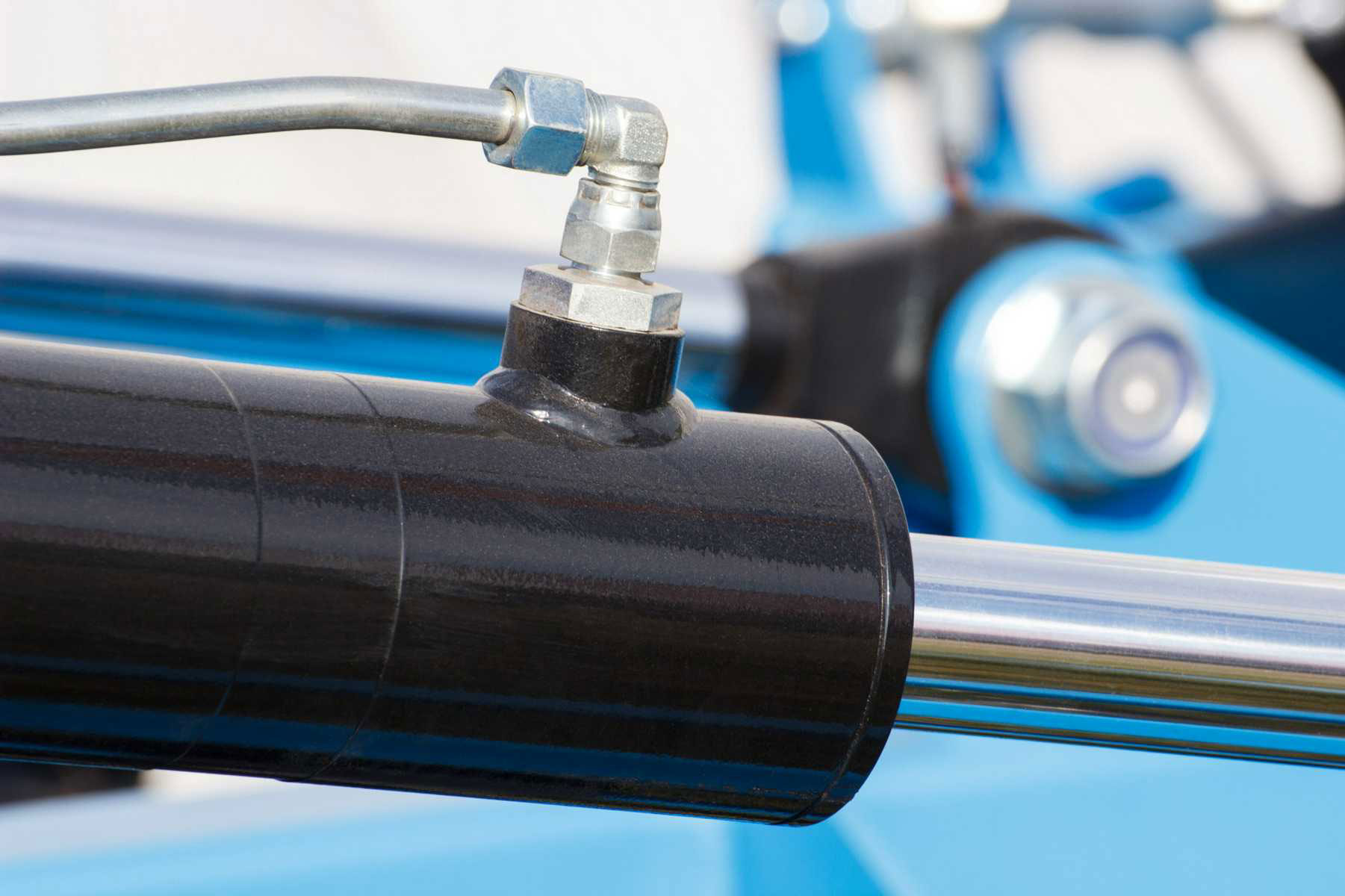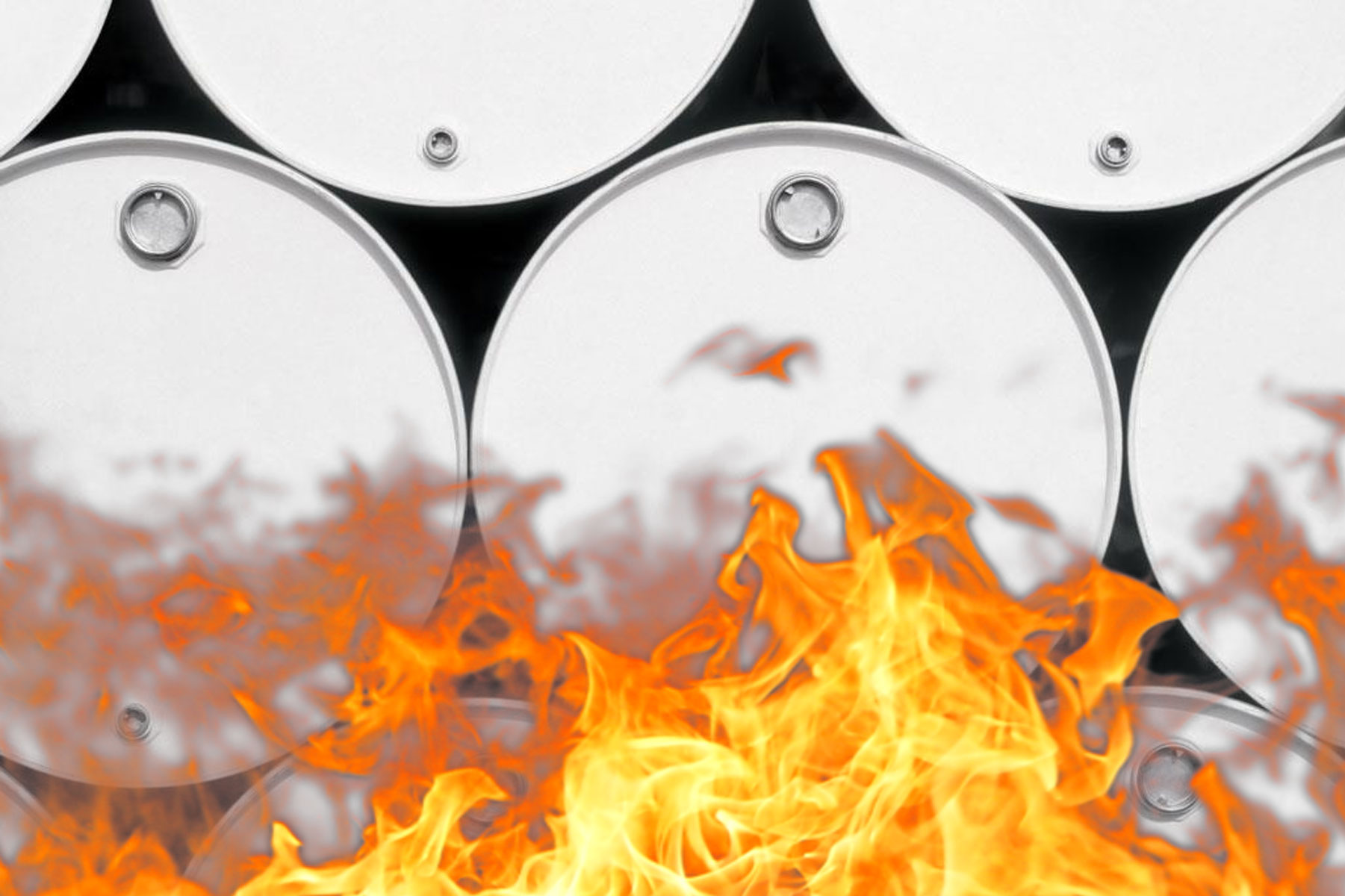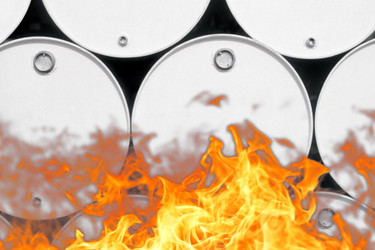Is hydraulic fluid flammable?
Aug 2nd 2025
When you're working with hydraulic systems—whether in a factory, on a job site, or in your own workshop—one question often comes up: Is hydraulic fluid flammable? The answer isn’t a simple yes or no. It depends on the type of fluid you're using, how it's stored, and the environment it’s in.
At BuyEnerpac.com, we help customers understand the details that make a difference. This guide walks you through what hydraulic fluid is, what makes it flammable (or not), and how to safely use and store it.
What Exactly Is Hydraulic Fluid?

Hydraulic fluid is the force behind nearly every hydraulic system. It’s the medium that transfers energy from a pump to a motor or cylinder, doing the heavy lifting in equipment like lifts, presses, forklifts, excavators, and more.
Most hydraulic fluids are oil-based and include additives to help with things like reducing wear, preventing corrosion, and transferring heat. Based hydraulic fluids are generally categorized as mineral oil-based hydraulic fluids, synthetic hydraulic fluids, and water-based hydraulic fluids. Mineral oil-based hydraulic fluids are the most common type, known for their widespread use, good lubricating properties, and cost-effectiveness, but they are also flammable and derived from petroleum. Mineral oils are often used as the base for mineral oil-based hydraulic fluids, highlighting their petroleum origin and typical applications. Water based hydraulic fluid and water based hydraulic fluids, such as water-glycol and water-in-oil emulsions, are valued for their low flammability and are often used in fire-sensitive environments.
The fluid you choose plays a major role in performance and safety.
Types of Hydraulic Fluids (and How They Handle Heat)
Here’s a breakdown of the most common types of hydraulic fluids and their fire-related characteristics:
- Petroleum-Based (Mineral Oil): These are widely used due to their affordability and lubrication properties, but they can catch fire under the right conditions. They have lower flash points, so caution is key in high-temperature environments.
- Synthetic Fluids: Designed for extreme conditions, synthetic hydraulic oils resist breakdown at high and low temperatures. Some are specifically formulated to be fire-resistant, which makes them a better fit for areas with heat or open flame exposure. Key features of synthetic fluids include excellent thermal stability, superior fire resistance, and industry certifications that distinguish them from conventional fluids.
- Water-Based Fluids: With high water content (usually 35%+), fluids like water-glycol or water-in-oil emulsions are naturally resistant to fire. One of their key features is their classification as non-flammable hydraulic fluid in certain applications, making them a preferred choice in steel plants, mines, and other fire-prone locations.
- Biodegradable Fluids: Made for environmentally sensitive applications, these fluids offer lower toxicity and reduced environmental impact. They provide environmental safety benefits by minimizing contamination concerns in case of leaks or spills. But check carefully—fire resistance can vary significantly from one product to another.
Can Hydraulic Fluid Catch Fire?
The short answer? Yes—under the right conditions. While hydraulic fluid isn’t usually flammable under everyday temperatures, it can ignite if exposed to hot surfaces, sparks, or flames. Leaks, high-pressure sprays, or overheated components can create dangerous situations fast.
For example, a small spray from a leaking hose can turn into a fireball if it hits a hot engine block. There have been incidents where hydraulic fluid caught fire in machinery after a spark or mechanical failure, igniting the flammable fluid and causing significant damage. The fluid can be ignited by hot surfaces or sparks, and igniting a flammable fluid in machinery can lead to extensive fire hazards. That’s why it’s so important to match your fluid to your environment—and keep systems in top condition.
What About AW46 Hydraulic Fluid?
AW46 hydraulic fluid (a common anti-wear mineral oil-based hydraulic fluid) isn’t technically classified as “flammable,” but don’t let that fool you. In a high-heat industrial setting, it can still ignite if temperatures get high enough or if it comes into contact with a hot surface. The fire point of AW46 is the temperature at which the fluid will continue to burn after being ignited, which is higher than its flash point and is a critical factor in evaluating its safety and fire resistance. Once it starts burning, it’s difficult to put out due to the intense heat it generates.
So yes—AW46 can burn. Treat it with the same level of caution you’d use for any combustible fluid.
What Temperature Does Hydraulic Fluid Ignite?

Each hydraulic fluid has its own flash point—the lowest temperature at which it can vaporize and form an ignitable mixture with air. For most petroleum-based fluids, that’s around 275°F (135°C). The fire point, on the other hand, is the temperature at which the fluid will continue to burn after being ignited, which is typically higher than the flash point and is crucial for evaluating fluid safety and fire resistance. But many can auto-ignite (without a flame or spark) at much higher temps, often between 500–700°F.
Here’s a general rule: keep your hydraulic systems well below the fluid’s flash point. At high temperatures, and especially at higher temperatures, the risk of ignition increases significantly. Heat not only increases fire risk—it can also break down fluid properties, reducing performance and lifespan.
High Pressure = Higher Risk
One of the biggest fire hazards comes from high-pressure systems. If a high-pressure hose bursts or leaks, pressurized fluid can form a fine mist that ignites easily, especially near hot surfaces or ignition sources. Hose failures not only cause fluid loss but also significantly increase fire risks, as the mist acts like fuel in the air.
Using fire-resistant hydraulic fluid and performing regular maintenance are key strategies to reduce fire hazards. Regular inspections, keeping connections tight, and replacing worn components before they fail all help minimize fire risks in hydraulic systems.
What Makes a Fluid “Fire Resistant”?
Fire-resistant hydraulic fluids are designed to reduce the chance of ignition and slow down flame spread. They come in several categories, each offering different protection:
- Water-based emulsions (HFA/HFB): High water content = low flammability
- Water glycol (HFC): Excellent fire resistance; common in steel plants
- Synthetic esters/phosphate esters (HFDU/HFDR): High-temp stability and excellent thermal stability for heavy-duty systems, contributing to superior fire resistance
These fluids are widely used in industrial applications where high safety standards are required, such as forging shops and other high-risk environments.
These fluids are often required in environments with strict safety regulations, and many meet certifications like Factory Mutual (FM) approval for non-flammability.
The Role of the Operating Environment
The environment in which your hydraulic systems operate has a direct impact on fire risk and overall safety. High-risk environments—such as factories, foundries, or sites with frequent exposure to hot surfaces, open flames, or electrical sparks—demand extra attention when it comes to choosing the right hydraulic fluid. In these settings, the use of fire-resistant hydraulic fluids is not just a recommendation, but often a necessity to reduce the risk of ignition and limit the spread of fire.
When evaluating your operating environment, consider factors like ambient temperature, system pressure, and the proximity of ignition sources. Hydraulic fluids can behave very differently under extreme temperatures or high pressures, and a fluid that performs well in one environment may pose significant fire hazards in another. For example, a standard hydraulic fluid might be suitable for a climate-controlled workshop, but in a steel mill with hot metal and open flames, only a fire-resistant hydraulic fluid will provide the necessary level of safety.
By thoroughly assessing your environment and understanding the specific risks—such as the likelihood of leaks near hot surfaces or the presence of flammable materials—you can select the most appropriate hydraulic fluid for your system. This proactive approach not only helps prevent fires but also protects your equipment, personnel, and the surrounding environment from unnecessary risk.
Fire Suppression Systems: Your Last Line of Defense

Even with the best hydraulic fluid and rigorous maintenance, fire hazards can never be completely eliminated in hydraulic systems, especially in high-risk environments. That’s where fire suppression systems come in as your last line of defense. These systems are engineered to detect and extinguish fires quickly, helping to minimize damage and protect both people and equipment.
Fire suppression systems can be customized to fit the specific needs of your hydraulic system, taking into account the type of hydraulic fluid in use, the layout of the equipment, and the presence of ignition sources. Whether you’re working with standard hydraulic fluids or fire-resistant options, having a reliable fire suppression system in place is essential for reducing fire risk and ensuring safety.
Regular inspection and maintenance of fire suppression systems are crucial to guarantee they function properly when needed most. In high-risk environments, these systems can make the difference between a minor incident and a catastrophic fire. By investing in effective fire suppression solutions, you add an extra layer of protection for your hydraulic systems, your team, and your facility.
Storage and Fire Safety Tips
Even fire-resistant fluids need to be handled carefully. Here’s how to reduce risks:
- Store in cool, dry areas away from heat sources or sparks
- Keep containers sealed tightly to prevent contamination
- Use metal safety cans for flammable fluids
- Label fluids clearly and keep incompatible materials apart
- Inspect hoses and pumps regularly for signs of wear, heat damage, or leaks
In such cases where system components are stored separately, fire response can be delayed or complicated, so it's important to consider different storage layouts when planning safety measures.
Fire suppression systems—like sprinklers, foam, or gas-based extinguishers—are essential in high-risk settings, especially when working with petroleum-based fluids.
Fire Risk Assessments Matter
If you manage a facility or oversee heavy equipment, conducting regular fire risk assessments should be part of your routine. Assess:
- What type of fluid is being used?
- Where are the hottest parts of the system?
- Could a leak reach an ignition source?
- Are your suppression systems and safety procedures up to date?
Fire risk assessments not only protect people and equipment but also help ensure environmental safety by preventing fluid leaks and fire-related contamination.
Prevention starts with planning. It’s the best way to keep your people—and your equipment—safe.
Manufacturer Recommendations: What the Experts Advise
When it comes to selecting the right hydraulic fluid for your system, manufacturer recommendations are invaluable. Equipment manufacturers have in-depth knowledge of their hydraulic systems and understand the demands of different operating environments. They can advise on the best hydraulic fluids to use, especially when it comes to fire-resistant hydraulic fluids for high-risk environments or applications involving hot surfaces and open flames.
Following manufacturer guidelines ensures that the hydraulic fluid you choose is fully compatible with your system, reducing the risk of fire hazards and helping to maintain optimal performance. Manufacturers may also provide specific advice on maintenance schedules, inspection routines, and testing procedures to keep your hydraulic system running safely and efficiently.
By consulting manufacturer recommendations and using the right hydraulic fluid for your application, you not only protect your equipment from unnecessary wear and fire risk but also extend its lifespan and reliability. Trusting the experts helps you stay compliant with safety standards and gives you peace of mind that your hydraulic system is operating at its best.
Why This Matters
The more you understand about hydraulic fluids, the better decisions you can make about equipment safety, maintenance schedules, and what to keep on hand in case of emergencies.
At BuyEnerpac.com, we don’t just sell high-quality hydraulic products—we help you choose the right solutions for your applications. Whether you need standard hydraulic oil or fire-resistant fluid for a high-risk environment, we’re here to help.
Explore our selection of fire-resistant hydraulic fluids today at BuyEnerpac.com or reach out to our expert team with questions. Your safety—and your system’s performance—depend on getting it right.
Published by Web Design Charlotte NC

